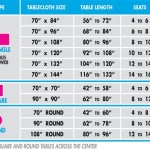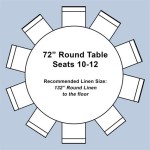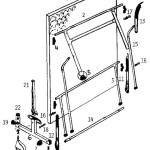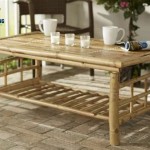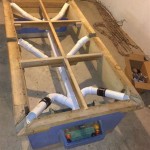Choosing the Right Coffee Table Size for Your Sectional Sofa
Selecting furniture for a living room often involves striking a balance between functionality and aesthetics. The sectional sofa, known for its comfort and spacious seating, is a popular choice for many homes. However, pairing it with the appropriate coffee table requires careful consideration to ensure both visual harmony and practical usability. A coffee table that is too small can look insignificant and fail to serve its purpose, while one that is too large can overwhelm the space and hinder movement. Understanding the factors that influence coffee table size is crucial to making the right decision for your sectional.
The ideal coffee table size for a sectional sofa is not a one-size-fits-all solution. It depends on several variables, including the dimensions of the sectional itself, the overall size of the room, the layout of the furniture, and the intended use of the coffee table. By taking these elements into account, one can select a coffee table that complements the sectional and enhances the functionality and aesthetics of the living room.
Determining the Appropriate Length and Width
The length of the coffee table is arguably the most critical dimension to consider. A general guideline is that the coffee table should be approximately two-thirds to three-quarters of the length of the sectional. This proportion creates a visually balanced arrangement and ensures that the coffee table is easily accessible from most seating positions on the sectional. For example, if the visible length of the sectional (excluding any extended chaise) is 100 inches, the coffee table should ideally be between 66 and 75 inches long.
The width of the coffee table is also important. It should be wide enough to accommodate items such as drinks, books, and decorative objects, but not so wide that it obstructs movement around the sectional. A width of between 24 and 36 inches is generally considered a comfortable range for most sectional sofas. However, this dimension can be adjusted based on the size of the room and the overall layout. In smaller living rooms, a narrower coffee table might be preferable to maximize space. In larger rooms, a wider coffee table can help to fill the void and create a more cohesive look.
When measuring the sectional, be sure to account for any protruding arms or chaise lounges. Only the visible length of the seating portion of the sectional should be used to determine the appropriate coffee table length. It is also advisable to measure the available space in the center of the sectional seating area to ensure that the chosen coffee table will fit comfortably without overcrowding the room.
Considering the Appropriate Height
The height of the coffee table is another essential factor to consider. The general rule of thumb is that the coffee table should be approximately the same height as the seat cushions of the sectional, or slightly lower. This ensures that the coffee table is easily accessible for setting down drinks or reaching for items while seated. A coffee table that is significantly lower than the seat cushions can be awkward to use, while one that is significantly higher can obstruct the view and create a visually unbalanced arrangement.
Most sectional sofas have seat cushions that are between 16 and 20 inches high. Therefore, a coffee table height within this range is generally suitable. However, personal preferences and the intended use of the coffee table can influence this decision. For example, if the coffee table is primarily used for serving food, a slightly higher height might be desirable. Conversely, if the coffee table is mainly used for decorative purposes, a slightly lower height might be preferred.
It is also important to consider the height of any rugs or carpets that will be placed under the coffee table. If a thick rug is used, it can effectively raise the height of the coffee table by an inch or two. In this case, it might be necessary to choose a coffee table that is slightly shorter than the seat cushions to compensate for the added height.
Adapting to Different Sectional Styles and Room Layouts
While the aforementioned guidelines provide a general framework for choosing the right coffee table size, it is important to adapt them to the specific style of the sectional and the layout of the room. Different sectional styles, such as L-shaped, U-shaped, and modular sectionals, may require different coffee table configurations. Similarly, different room layouts, such as open-plan living spaces and smaller, more enclosed rooms, may call for different approaches to coffee table placement and sizing.
For L-shaped sectionals, a rectangular or oval coffee table is often a good choice. The shape of the coffee table should generally mimic the shape of the sectional, creating a sense of visual harmony. The coffee table should be placed in the center of the seating area, within easy reach of both sides of the sectional. In some cases, two smaller coffee tables can be used instead of one large coffee table. This can provide greater flexibility in terms of placement and functionality.
For U-shaped sectionals, a larger coffee table is typically required to fill the void in the center of the seating area. A rectangular or square coffee table is often a good choice for U-shaped sectionals. The coffee table should be placed equidistant from all sides of the sectional, ensuring that it is easily accessible from all seating positions. In some cases, a round coffee table can also work well with a U-shaped sectional, particularly if the room is large enough to accommodate the circular shape without obstructing movement.
For modular sectionals, the coffee table configuration can be more flexible. Modular sectionals allow for a wide range of arrangements, and the coffee table can be adapted to suit the specific configuration. In some cases, a single large coffee table may be appropriate. In other cases, a cluster of smaller coffee tables or ottomans can provide greater flexibility and functionality. The key is to choose a coffee table configuration that complements the overall design of the sectional and meets the specific needs of the users.
In smaller living rooms, it is important to choose a coffee table that is proportional to the size of the room. A large coffee table can overwhelm a small space and make it feel cramped. In this case, a smaller coffee table or a set of nesting tables might be a better choice. Nesting tables can be easily stored away when not in use, freeing up valuable floor space. In larger living rooms, a larger coffee table can help to fill the void and create a more cohesive look. However, it is important to ensure that the coffee table does not obstruct movement or create a visual barrier in the room.
The placement of the coffee table should also be carefully considered. It should be placed within easy reach of the sectional but not so close that it obstructs movement. A general guideline is to leave at least 18 inches of space between the coffee table and the sectional. This allows for comfortable legroom and easy access to the seating area. The coffee table should also be placed away from doorways and walkways to avoid creating obstructions.
Ultimately, the best coffee table size for a sectional sofa is the one that best meets the needs of the users and complements the overall design of the room. By considering the dimensions of the sectional, the size of the room, the style of the sectional, and the intended use of the coffee table, one can select a coffee table that is both functional and aesthetically pleasing.
Beyond the dimensions, material considerations also play a pivotal role. A glass-topped coffee table can visually lighten a room, making it appear more spacious, while a solid wood table provides a more substantial and grounded feel. Metal frames can add a modern touch, while upholstered ottomans can serve as both a coffee table and extra seating. The material should complement the existing furniture and the overall style of the living room.
Storage options within the coffee table design also contribute to functionality. Coffee tables with drawers or shelves offer convenient storage for remote controls, magazines, and other items, helping to keep the living room tidy. Lift-top coffee tables provide a versatile surface for working or eating while seated on the sectional. These features can enhance the practicality of the coffee table and make it a more valuable addition to the living room.
Lighting also affects the perception of size. A darker coffee table in a dimly lit room might feel larger and more imposing, while a lighter coffee table in a well-lit room can appear smaller and more airy. Consider the natural and artificial light sources in the room when choosing the color and finish of the coffee table.

How To Choose The Right Size Shape Coffee Table For Your Living Space

How To Choose The Right Size Shape Coffee Table For Your Living Space

Pairing Sectional Sofas And Coffee Tables Room For Tuesday

Coffee Table Singapore How To Choose The Best

Coffee Table Size Guide How To Choose The Right One
Four Tips For Choosing The Right Coffee Table Post

The Ultimate Coffee Table Size Guide Apt2b

Rules For Picking A Coffee Table 105 Of Our Favorites Every Space Emily Henderson Living Room Furniture Layout Decor Livingroom

How To Find The Perfect Coffee Table For Your Sectional Sofa

32 Stylish Round Coffee Table With Sectional Couch Ideas To Add Zest Living Room Side Beige Rooms

